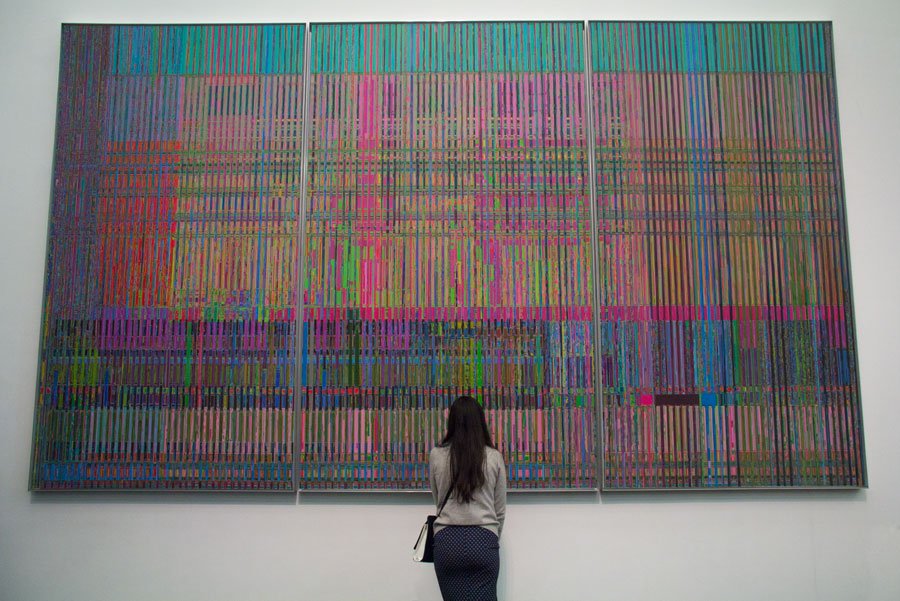
The title "Colors" of Liu Wei's solo exhibit may seem simplistic considering the variety, breadth and depth of his works presently on display at the Ullens Center for Contemporary Arts. But Liu Wei's work is well-known for being more than what it first appears to be. As Liu is an ever-more important player in Chinese and international art world, it's only appropriate for him to be showcased in the UCCA's Great Hall, an internationally acclaimed space where many of China's best artists have appeared.
"Colors" is Liu Wei 's largest institutional solo show to date, a huge collection of paintings, sculptures and installations have never been publicly seen before, sure to further establish him as a key player in Chinese art. The exhibit is organized in such a way that the massive gallery space feels almost claustrophobic, everything laid out in a way that reinforces one of Liu's central themes of displacement. Viewers weave in and out of barricades of stretched canvas, a field of disorientingly angled mirror panes, and towering walls which display work far above eye level.
Surprisingly, the most compelling works of the exhibit are Liu's paintings, mostly lining the periphery of the space. Large scale diptychs and triptychs of tiny lines reference industrial or computer inner workings and invariably draw viewers in close as they attempt to understand the process of their creation. The vertical lines of East No. 1 have an a metallic, illusory 3D quality that causes confusion about what viewers are actually looking at. Borrowing from Warhol, Liu employed local laborers to create his meticulous paintings, painstakingly explaining how to carry out the process which could take several months per painting.
The exhibit's one "live" piece of art is Shapeshifting, a huge LCD screen of colors that fade into each other. It is given a place of prominence in the hall, though it notably fails to grasp viewers' attention.
The entire collection dares viewers to ask (or not ask) Why. "I think it says something about China today, that you can have an artist today who can speak in such formalistic, aesthetic terms, as opposed to having the burden of narrating the nationalist situation," commented UCCA director Philp Tinari, who also curated this show. "He's been allowed by a sophisticated Chinese public, and a global public that takes China more seriously, to work entirely on visuality and what interests him on a very straightforward level."
One thing that binds Liu's works together is the fact that they all pose "big" questions. Abstract ideas about observing/thinking/knowing are consistent throughout, the large majority of works notably free from any obvious references to history (or China). But those absences only invite viewers to find all the more connections to those things below the surface.
Liu Wei himself is tightlipped about his work. In the panel discussion before the viewing, Liu barely spoke, allowing a couple of professors to wax poetic about their own opinions of his work. He only chipped in occasionally with a comment about how well the professors had spoken, before concluding, "but that has nothing to do with me," comically causing one professor to curse.
Tinari is no stranger to the ploy. "The artist has the luxury and the privilege of not having to explain. They can do that for different reasons. He gives a good one which is that he just wants everyone to think for themselves." He paused a moment before adding, "Of course, it's also subterfuge."





